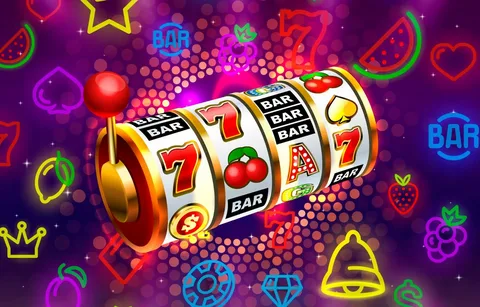Slot machines are among the most popular games in casinos, both land-based and online. Their bright lights, engaging sounds, and promises of big wins make them highly attractive. However, beneath the spinning reels lies a foundation of complex mathematics. In this article, we’ll explore the math behind the slot: odds, variance, and strategy, shedding light on how these machines work and what players can expect.
Understanding Slot Machine Odds
At the heart of every slot machine is a Random Number Generator (RNG), which determines the outcome of every spin. Unlike traditional games like blackjack or poker, slots are purely based on chance. The odds of winning are calculated based on the number of symbols and the number of reels.
For example, if a machine has 3 reels with 10 symbols each, the odds of hitting a specific combination are 1 in 1,000 (10 × 10 × 10). However, modern slots often feature virtual reels, where each symbol can appear more or less frequently than others, allowing game developers to fine-tune the payout percentages.
Variance and Volatility: The Risk Factor
Another key concept in the math behind the slot: odds, variance, and strategy is variance (also known as volatility). Variance measures the level of risk involved in a particular slot game.
- Low variance slots offer frequent but smaller wins, ideal for players looking for longer play sessions.
- High variance slots offer less frequent wins but with the potential for larger payouts.
Understanding variance can help players choose games that align with their risk tolerance and bankroll.
Is There a Winning Strategy?
Many players wonder if there’s a foolproof strategy to beat the slots. Unfortunately, since slot machines are governed by RNGs, no strategy can guarantee a win. However, knowledge of the math behind the slot: odds, variance, and strategy can improve decision-making.
Smart Slot Strategies:
- Set a budget and stick to it.
- Choose games with higher RTP (Return to Player) percentages. An RTP of 96% means the machine returns $96 for every $100 wagered on average.
- Match the game to your goals — high variance for jackpot chasers, low variance for longer play.
Conclusion
While slot machines may seem simple on the surface, they rely on complex mathematical principles that determine outcomes and payouts. By understanding the math behind the slot: odds, variance, and strategy, players can make more informed choices, manage their expectations, and enjoy the game responsibly. Whether you’re in it for entertainment or chasing that big win, a little math knowledge goes a long way.

